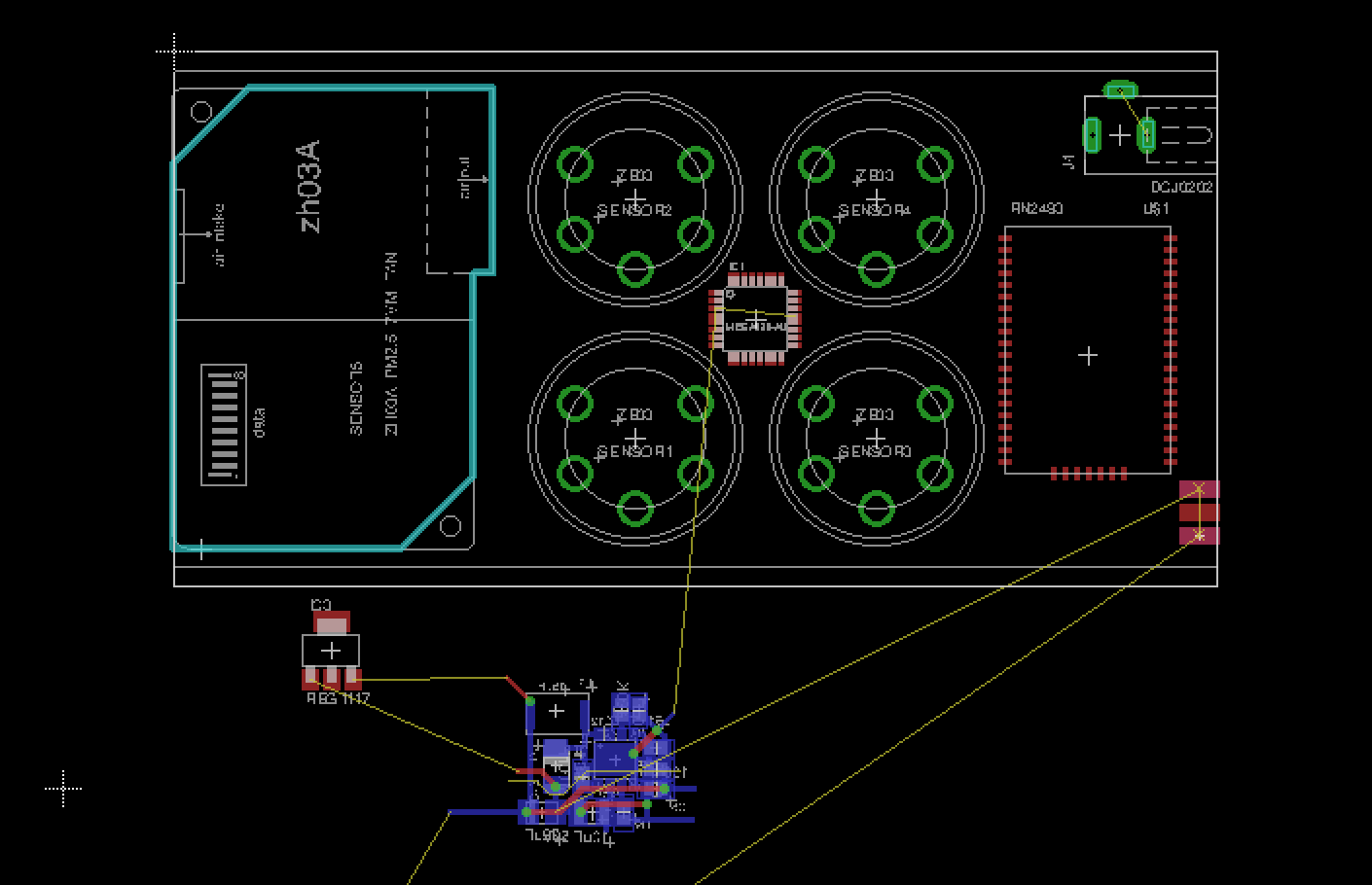This construction started as a prototype, and I used it a lot in its initial form. I decided to make the next step, and use the field data and sensors tests to build a product out of them. For air pollution in cities, I checked the requirements on Air Quality Index and it became evident that many international evaluation standards go for 6 main parameters. These are Ozone, Carbon Monoxide, Sulphur Dioxide, Nitrogen Dioxide, Particulate Matter PM2.5 and Particulate Matter 10.
As I said my sensor homework was done, so I knew exactly what to go for. I designed a board with 6 electrochemical sensors and a laser light scattering PM sensor. The 6 electrochemical sensor slots would allow two additional gases to be detected, optionally.

Then, checking the BOM it was clear the costs are too high. 6 4Series electrochemical sensors in a box is not exactly cheap. And talking about the box, that became rather large too. So I removed 2 slots to meet just the Air Quality index requirements. Next was a few hours of fun, doing the PCB traces manually (like I always do):

As this will have built in Internet connectivity, the final device will be an IOT detector. I went for two connectivity options, one was LoraWAN and the second Wifi, to cover multiple usage scenarios in City deployments across various ranges and with different power requirement. Here is the LoraWAN:

And this is the Wifi variant:

I used some interesting new tools for part of the design, the online tools from EasyEDA. I also used their services to order the PCBs, as my DIY toner transfer attempts failed on this.
 Radu Motisan
Radu Motisan
Discussions
Become a Hackaday.io Member
Create an account to leave a comment. Already have an account? Log In.